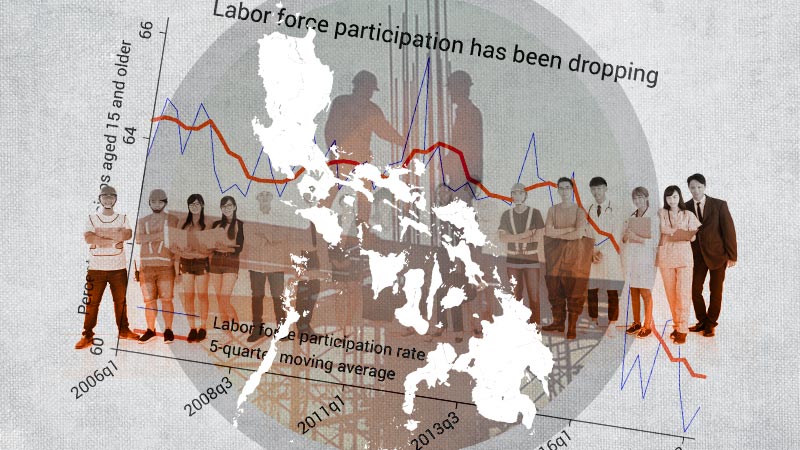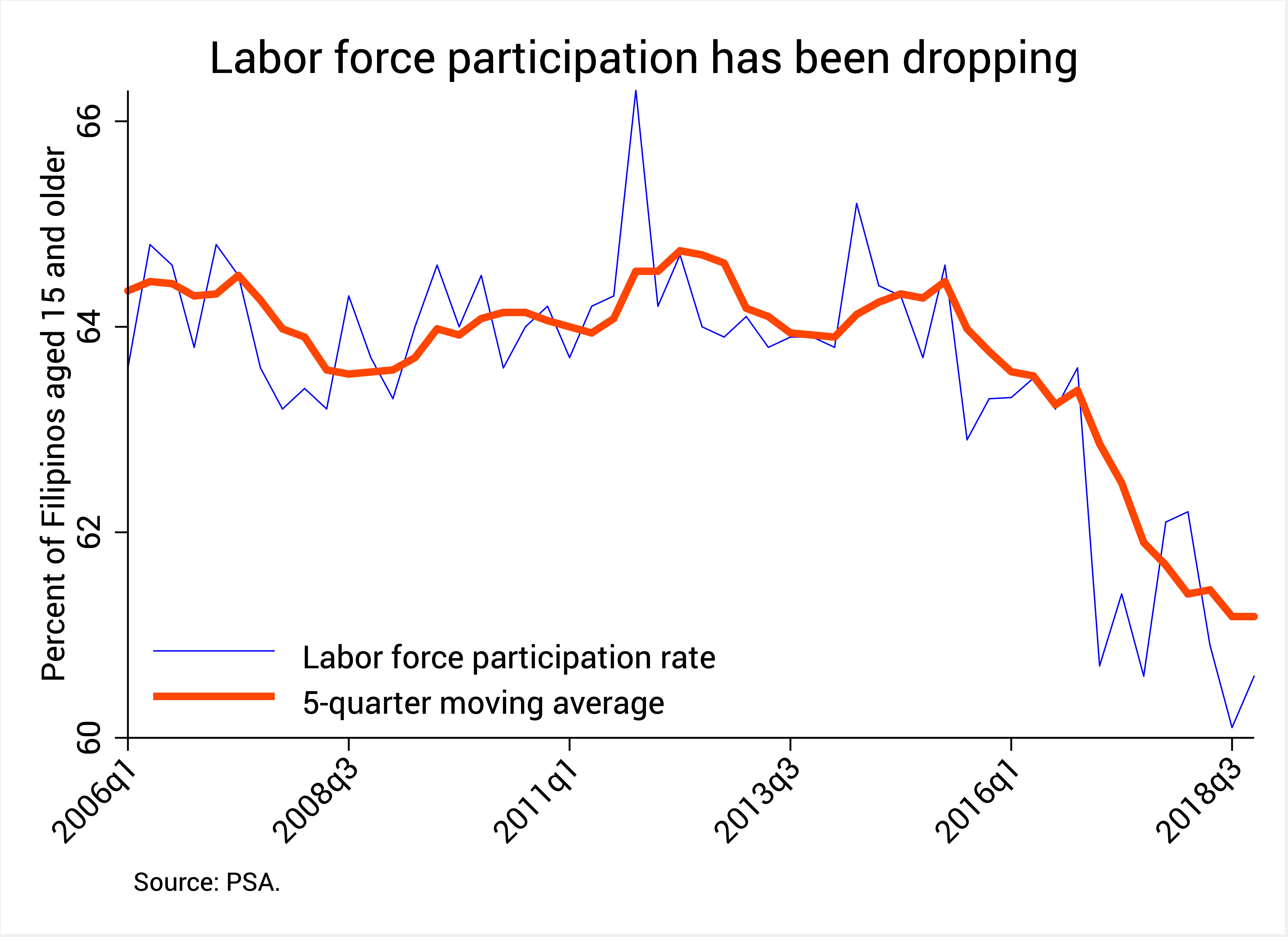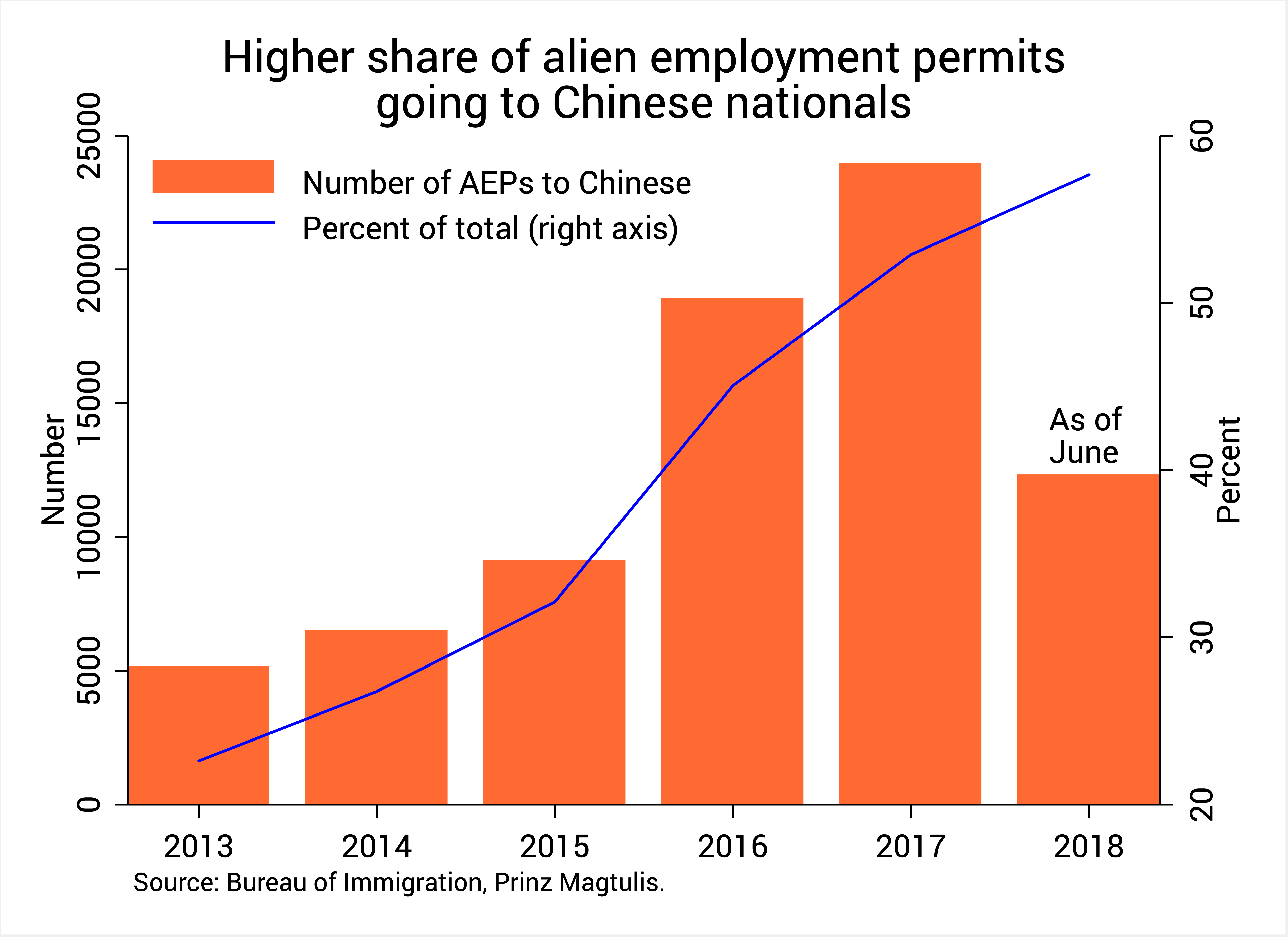SUMMARY
This is AI generated summarization, which may have errors. For context, always refer to the full article.


If the jobs figures look bad, it’s because they are.
Palace Spokesperson Salvador Panelo recently chastised IBON Foundation, an economic think tank, for claiming that the Duterte administration was only able to create 81,000 jobs every year from 2016 to 2018.
Not only did Panelo say IBON’s numbers were “mathematically impossible,” he also suggested that IBON is being “inept or just maliciously reckless to degrade the achievements of the President.”
The thing is, IBON’s numbers are quite right. They actually came from the government.
In this article we discuss the slow pace of job creation in the time of Duterte. A close look at the statistics shows that the Palace is painting an excessively rosy picture of the jobs market.
Dismal jobs numbers
In response to IBON’s numbers, Panelo retorted that “the government generated 826,000 jobs for the country in 2018 alone.”
Sure, this is correct. But let’s be clear: it’s not government that creates jobs by and large, it’s the private sector.
Panelo’s statement hides the fact that the economy actually shed a whopping 664,000 jobs in 2017 alone, based on official survey data from the Philippine Statistics Authority (PSA).
Because of this, there were only 162,000 more Filipinos employed in 2018 than in 2016. Dividing this increment by two years, we get a rate of job creation of 81,000 per year (which is precisely IBON’s claim).
Therefore, far from being a “mathematical impossibility,” as Panelo put it, this is simple arithmetic.
Just how dismal are these figures?
First, remember that the Duterte government launched its Jobs, Jobs, Jobs program to complement the P8-trillion Build, Build, Build infrastructure program.
Despite a promised cornucopia of jobs, only about 18,000 jobs are currently available according to its website – puny compared to the 2.2 million jobless Filipinos recorded as of October 2018.
Second, we were coming from a time of impressive job creation before Duterte came into office.
Between 2010 and 2016 there were an additional 4.95 million employed Filipinos. Spreading this over a period of 6 years, this translates to 825,000 per year, which is more than 10 times the going rate of the Duterte administration.
In other words, the previous Aquino administration created jobs at an annual rate more than 10 times faster than Duterte government’s current performance.
When it comes to jobs, therefore, Duterte’s economic managers clearly have their work cut out for them.
Where are the workers?
Aside from poor job creation, more than half a million workers have disappeared from the labor force in 2017.
As such, the country’s labor force in 2018 was just about as large as it was in 2016. This, despite the continued growth of the country’s working-age population (comprising Filipinos aged 15 to 64).
Perhaps the reason is the smaller proportion of the working-age population working or seeking work. Figure 1 shows that the so-called “labor force participation rate” has reached a record low in 2018.
In other words, otherwise capable workers are dropping out of the labor market. But why?

Figure 1
Some point to the implementation of the K-12 program, particularly its Senior High School component. A sizeable number of the 1.5 million students who first entered the program in 2016 deferred work and underwent 2 more years of basic education, thus moving themselves out of the labor force.
But this can’t be the entire explanation. In 2016 the labor force still grew by about 2 million workers. It was only in 2017 that the labor force shed about 586,000 workers.
The exact reason behind the plummeting labor force participation rate still escapes most analysts, and this issue merits deeper study. But government itself must look into its possible causes and consequences.
For one, this might affect our country’s ability to reap the so-called “demographic dividend.” In the coming years our country’s labor force is set to be at its most productive phase, which could boost growth and prosperity for decades to come.
For us to reap this dividend, we cannot allow labor force participation to be in the doldrums for too long.
Jobs for the Chinese
As many will attest to, some jobs out there have recently been filled by Chinese workers – whether in Build, Build, Build projects or the country’s booming online gambling operations. (READ: How China’s online gambling addiction is reshaping Manila)
Figure 2 below shows the swelling number of alien employment permits (AEPs) granted by the Bureau of Immigration to Chinese nationals. Note that these numbers still exclude the Chinese nationals who enter the country as tourists but stay on illegally to find work.
 Figure 2
Figure 2
There is of course nothing inherently wrong about Chinese nationals (or foreigners in general) working in the Philippines, especially if we can learn a thing or two from them about new technologies or processes.
But the Chinese government has routinely required borrower countries to exclusively hire Chinese workers for projects they are funding or supporting under the ambitious Belt and Road Initiative. (READ: Is Duterte selling out the Philippines to China?)
Hence, it would appear that Build, Build, Build is a reliable generator of jobs – at least for Chinese workers facing economic slowdown back at home.
Asked about the influx of Chinese construction workers, Panelo said, “We no longer have construction workers now because they’ve gone abroad.”
How could this be? Does the Palace want us to believe that none of the 2.2 million jobless Filipinos (as of October) could fill the thousands of vacant jobs under Build, Build, Build, few as they are? And that only Chinese workers could hope to fill such vacancies?
Wrong priorities
To be fair, recent data show a silver lining in the country’s labor market: the underemployment rate – comprising workers with jobs but not enough pay – has reached a record low in October. Unemployment also continues to follow its long-term decline.
Despite these seeming successes, the Duterte administration has yet to deliver on the job creation front.
This is unfortunate since job creation continues to be top of mind among Filipinos. Last September Pulse Asia showed that 30% of Filipinos cared the most about “creating more jobs”—more than the 23% who pointed to “fighting criminality” or the 3% who cited “changing the constitution.”
We’re nearing the halfway mark of the Duterte administration. It’s high time they got their priorities right. – Rappler.com
The author is a PhD candidate at the UP School of Economics. His views are independent of the views of his affiliations. Follow JC on Twitter (@jcpunongbayan) and Usapang Econ (usapangecon.com).
Add a comment
How does this make you feel?
There are no comments yet. Add your comment to start the conversation.